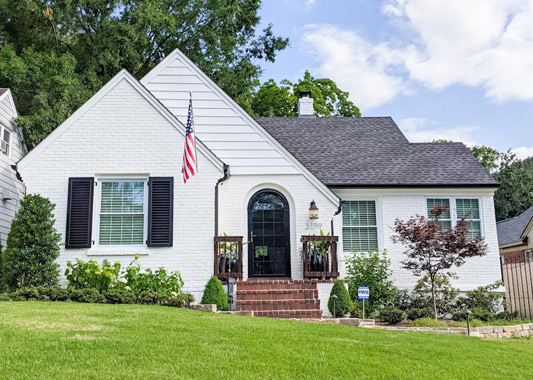A simple definition of TVOC is the Total Volatile Organic Compounds, but this can be misleading. It’s not necessarily the sum of all the VOCs, but rather it’s only certain VOCs. Usually with regards to paint, it is defined as the lower weight molecular compounds or the indoor air VOC emissions.
TVOC is not being talked about in the paint industry because of the current federal regulations. When most manufacturers do their Zero VOC emissions test, they use the EPA Test Method 24, which only determines if the product contains the regulated VOC emissions, or chemicals that contribute to smog and global warming.
Regulated is the key word here. There are tons of VOCs in our environment but when you think of paint you often hear the term Zero VOC and think it means all of the toxic chemicals associated with that product or even TVOC.
This is not true. Paint manufacturers are allowed to use the term Zero VOC in the United States if the product has passed the EPA Method Test 24, which only regulates certain VOCs. There are many toxic exempt compounds not being regulated including Formaldehyde (carcinogen); Benzene (carcinogen); Trimethlybenzene (neurotoxicant); Toluene (neurotoxicant); and Xylene (neurotoxicant).
This also means TVOCs are not being regulated (at least in the U.S. but they are in other countries like France and Germany). It is a set of VOCs that affect your indoor air quality. The scary thing is these chemicals have been known to have worse health effects for you than the outdoor or regulated VOCs; and they have no predictive correlation with VOC content level1. One question that we need to be asking is:
What is the actual TVOC quantity in your paint product?
Manufacturers have to provide MSDS, but these are self-reported and they don’t always list the actual amount. Many products also have green seals or labels that make you think their numbers are good, but you have to read the fine print to find out the actual quantity, if they even reveal it.
ROMA’s testing for TVOC revealed <22 µg/m3 after 48 hours for our Domus line mineral paints. In toxicology, this quantity is extraordinarily low and it is considered irrelevant. It would contribute a negligible amount of TVOC emissions to your indoor air, way below the ideal levels.
We spend 90% of our time indoors and yet according to the EPA, indoor air can be 2 to 5 times more polluted than outdoors2. If this is the case, why hasn’t the EPA developed standards for indoor air quality in the paint industry? There are most likely testing procedural, political, and resource issues at hand, and we may not know the exact reasons, but ROMA is setting a new standard.
For the industry to change, we must do better than the current regulation. Here are 3 things you can do:
- Don’t assume a Zero VOC label means that the paint product doesn’t contain any VOCs including TVOCs, or other toxic chemicals.
- Research the actual TVOC number from the paint manufacturers testing and verify if it has been 3rd party tested and certified. (Remember that the EPA Test Method 24 doesn’t reveal this number.)
- If the product hasn’t been 3rd party tested with a standard testing protocol or the paint manufacturer won’t reveal their actual TVOC number, then switch to a paint manufacturer that does.



 Photo Credit: Caldwell House, TN
Photo Credit: Caldwell House, TN